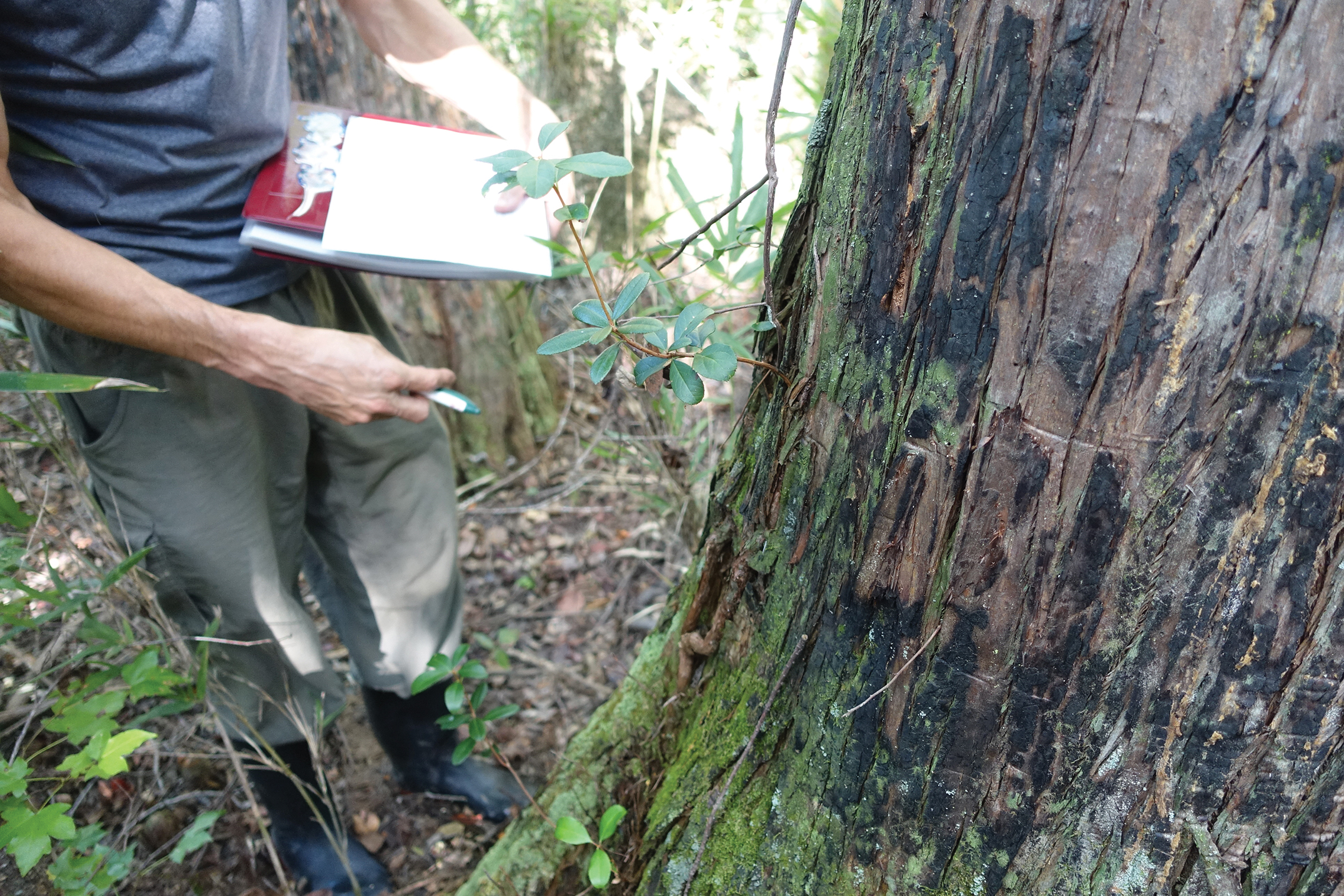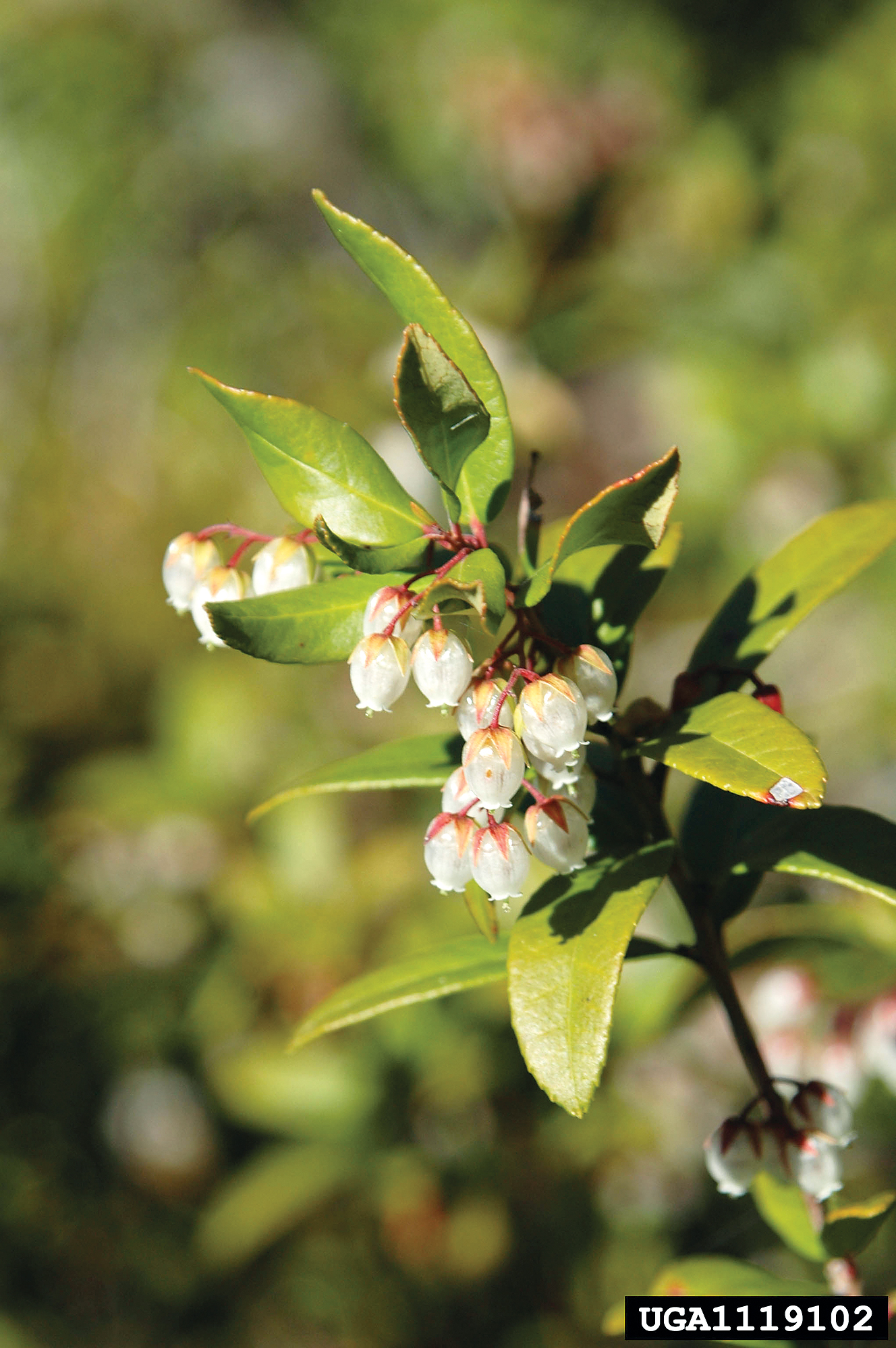At its core The Campaign for the Living Collections is a strategic endeavor involving years of planning and ten years of execution. Each expedition is organized thoroughly in advance, and anchored by specific target species or desiderata. However, no amount of planning can account for all of the factors at play when collecting plants in the wild, and as such non-target species are often collected opportunistically. Opportunistic collections can include biological outliers, like Pieris phillyreifolia (climbing fetterbush), the only Ericaceous (belonging to the heather family) plant native to North America that is also a woody vine or liana. After seeing this unique Pieris species, I could not resist the chance to collect it for the Arnold Arboretum, as a participant in 2017’s Coastal Southeast Expedition (COSE).
Pieris comprises seven known species. The two most utilized as ornamentals are the North American native Pieris floribunda (mountain andromeda) and Pieris japonica (Japanese andromeda). During our trip, we sought out the lesser-known P. phillyreifolia, found only in South Carolina, Georgia, Florida, and coastal areas of Mississippi and Alabama. Walter Judd (1982) wrote about this species in detail, but W.J. Hooker first described it in 1837, initially placing it in the genus Andromeda (Lemon and Voegeli, 1962).

While exploring Francis Marion National Forest in South Carolina, we crossed paths with Clemson University’s Patrick McMillan leading a group tour of the natural history of the area. Ethan Kauffman of Stoneleigh Gardens (one of the COSE participants) was keen to collect the unusual climbing fetterbush, and mentioned this to Patrick, who then produced a hand-drawn map of a nearby location of Pieris phillyreifolia for the team. Armed with this treasure map, our group eagerly set out in the National Forest along US Route 17 to find it. Our collecting routine was a bit comical: we would drive along the highway and then every few minutes Ethan would jump out and run into the woods, only to emerge seconds later to let us know we were not there yet. This occurred several times and admittedly, I was growing skeptical that we would find ever this population. Finally, after turning around on the highway several times, Ethan got out of the car and motioned for us to join him in the woods: he believed he found the spot and the particular Taxodium ascendens (pond cypress) we were seeking. We all got out and trudged through the swampy borderlands of the highway to see if he was correct. He was! We found lianas just 9 meters (10 yards) from the highway.
It is often unique plant form and function that interest people the most, and what makes the story of this species so fascinating is not just where and how we found, but what it grew on, and the mechanics of that growth. The common name, climbing fetterbush, is apt as we found it climbing on Taxodium ascendens in a cypress swamp. The root system was nestled in the buttressing roots of the cypress, and the stem traveled up the host tree underneath the bark, emerging from vertical cracks every 1 to 2 meters (3.3 to 6.6 feet) as aerial shoots that extended outward up to half a meter (20 inches) from the tree. The plants we found were robust climbers reaching at least 6.1 meters (20 feet) up the Taxodium. On our trip last fall, we only observed this plant climbing T. ascendens, however it also grows on Chamaecyparis thyoides (Atlantic white cedar), Cyrilla racemiflora (swamp cyrilla), Pinus elliottii (slash pine), and other downed trees and soil mounds, most likely to avoid standing water (Lemon and Voegeli 1962; Judd 1982).
Citation: Halloran, Sean. 2017. Pieris phillyreifolia: The Opportunistic Climbing Fetterbush. Arnoldia 75(3): 16–18.
As a plant propagator, it is invaluable to understand a plant’s life cycle to grow it successfully in a controlled environment. For many taxa there are established protocols for germinating seeds, rooting cuttings, or grafting budwood. However, this is not the case for Pieris phillyreifolia. When in doubt we often look to established protocols for related species, so I decided to treat the seed via cold stratification for 90 days at 4 degrees Celsius (39 degrees Fahrenheit), which our propagation records indicate work for other species of Pieris. My first-hand knowledge of climbing fetterbush’s natural environment will also be put to good use as we figure out where to cultivate this unique Southeastern U.S. native once we have successfully propagated it. Given where we found it growing, I recommend we site this plant in a wet depression under heavy deciduous shade where it can grow up a trunk or trellis. Given its native range, we should protect it from harsh winters by establishing it in a warmer microclimate within the Arboretum. Observing a plant’s unique form in the wild, and researching its fascinating history upon return, deepens the appreciation for all propagules collected afield. The climbing fetterbush is no exception.

Literature Cited
Hooker, W.J., and J.D. Hooker. 1872. Icones Plantarum, Or Figures, with Brief Descriptive Characters and Remarks, of New Or Rare Plants, Selected from the Author’s Herbarium (Vol. 12). London: Longman.
Judd, W.S. 1982. A taxonomic revision of Pieris (Ericaceae). Journal of the Arnold Arboretum 63:103–144.
Lemon, P.C., and J.M. Voegeli. 1962. Anatomy and ecology of Pieris phillyreifolia (Hook.) DC. Bulletin of the Torrey Botanical Club 89:303–311. Arnold Arboretum.
Sean Halloran is the Plant Propagator at the Arnold Arboretum.
From “free” to “friend”…
Established in 1911 as the Bulletin of Popular Information, Arnoldia has long been a definitive forum for conversations about temperate woody plants and their landscapes. In 2022, we rolled out a new vision for the magazine as a vigorous forum for tales of plant exploration, behind-the-scenes glimpses of botanical research, and deep dives into the history of gardens, landscapes, and science. The new Arnoldia includes poetry, visual art, and literary essays, following the human imagination wherever it entangles with trees.
It takes resources to gather and nurture these new voices, and we depend on the support of our member-subscribers to make it possible. But membership means more: by becoming a member of the Arnold Arboretum, you help to keep our collection vibrant and our research and educational mission active. Through the pages of Arnoldia, you can take part in the life of this free-to-all landscape whether you live next door or an ocean away.

